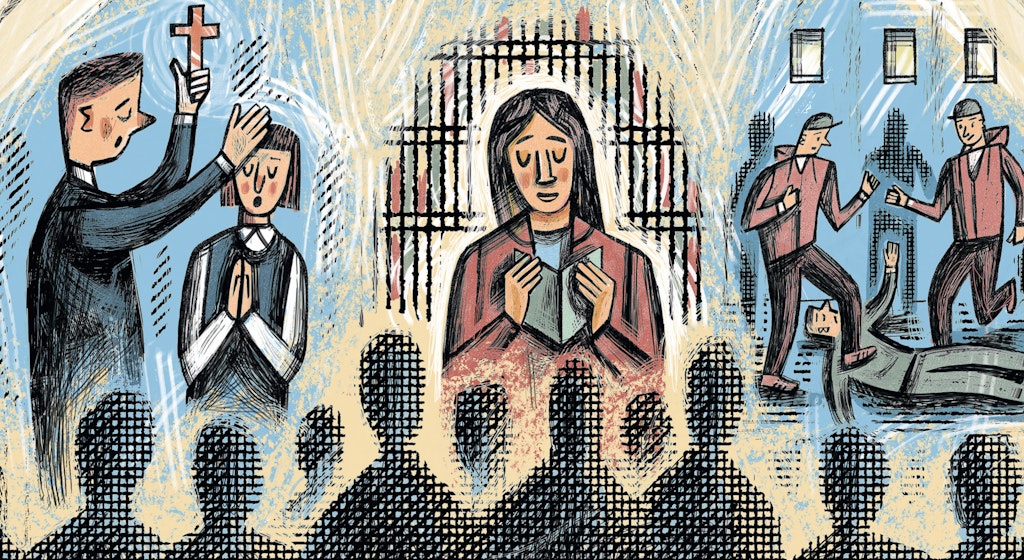Fit for a king
The restoration of Charles III
This article is taken from the November 2022 issue of The Critic. To get the full magazine why not subscribe? Right now we’re offering five issues for just £10.
By chance, I was standing in the entrance hall of Dumfries House at exactly five o’clock on the day the Queen died. I received an unexpected phone call from a friend who told me the sad news, which was not confirmed on television until 6.30pm.
I had spent the morning wandering the grounds, which I had not been able to do on previous visits. My visit gave me an opportunity to consider what the Prince of Wales, as he was then, now King Charles III, has achieved at Dumfries House, which may turn out to be relevant to how he exercises his influence, if indeed, he is allowed — or feels it appropriate — to have any.
This is the first lesson of Dumfries House: faced by an intransigent bureaucracy, the King was able to find adventurous ways to bypass it
The circumstances in which he took on the restoration of Dumfries House are instructive. It is a mid-eighteenth-century, Scottish Palladian house, designed by Robert Adam (its construction overseen by Robert’s older brother, John), on a family estate outside Cumnock in Ayrshire. It is in what used to be mining country, now mostly arable farming.
The house was originally built by the fifth Earl of Dumfries, but was inherited by the Marquess of Bute and was lived in from 1956 to 1993 by the dowager marchioness, who was keen on horse racing, whisky and poker. Following her death, it was offered to the National Trust for Scotland by the incoming marquess. The Trust turned it down. He offered it again in 2004 but, following long negotiations, it was turned down again.
In April 2007, it was offered for sale by Savills and the contents were due to be auctioned by Christie’s in July 2007. It looked as if official bodies had universally failed to recognise its great importance, unwilling to stump up the money.
It was thanks to the then Prince of Wales who intervened in June 2007 with the offer of a loan of £20 million from the Prince’s Charitable Foundation that the house, its wonderful contents, and the estate were saved.
So, this is the first lesson of Dumfries House: faced by an intransigent bureaucracy, the King was able to find adventurous ways to bypass it. Some people may deplore this. But it shows an impressive and genuine commitment to conservation.

Money has been poured into the restoration of the house. The great bed has been re-covered, the wiring replaced, and a new boiler installed. To judge from the interiors at Buckingham Palace, the late Queen did not like spending money on refurbishment. The King, on the other hand, employed excellent interior decorators, David Mlinaric and Piers von Westenholz, to advise him on what to do. Interiors are expected to be restored to the highest standards.
You could say that the house follows orthodox principles of conservation. Where the King has been most adventurous is the way in which the grounds have been used. From the beginning, the public were invited to walk in the grounds for free.
During the lifetime of the dowager duchess, the estate had felt deeply private. Now, locals can walk their dogs freely around the gardens, only being asked to contribute £1 if they decide to go into the maze. A café has been installed in a converted coach house, so that people can have a cup of coffee and lunch.

A catering school was opened in a nearby building where people could learn to be a waiter as well as cook. It was a way of providing skills to people in the local area and has been very successful. Then, the old laundry building was converted into four artists’ studios, so that a residency programme could be established, administered by what was the Prince’s and is now the Royal Drawing School.
The government has been keen on levelling-up. But the King has pioneered an effective form of levelling-up by providing courses on all sorts of subjects, including health and wellbeing, horticulture and traditional building skills. Commentators are often snide about the King’s interest in complementary therapies. But he has established on his own a brand new set of publicly accessible facilities, raising the money privately. It’s impressive.
Finally, I was interested to see the new buildings that have been erected on the estate. I am not going to pretend that they are in the forefront of architectural fashion. But equally, they are not all faux classical, as architectural critics might expect. The King has employed a Scottish architect, Keith Ross, trained at the Edinburgh College of Art, to design buildings in a form of artisan vernacular, using the best possible materials.
He has established on his own a brand new set of publicly accessible facilities, raising the money privately. It’s impressive
Many people have forgotten that, before he became a supporter of Léon Krier and Quinlan Terry, the King was a pioneer in promoting the principles of Community Architecture, as advocated by the likes of Rod Hackney in the late 1970s.
His approach to architecture is often regarded as purely revivalist. My impression is that he is at least as interested in the preservation of traditional building crafts and the use of the best available building materials as he is in commissioning new classical buildings.
Of course, the King may not be allowed to retain his former interests. But it could be good for the quality of contemporary architecture if he is able to maintain his passionate commitment to conservation and encourage the revival of traditional building skills, which he has so successfully promoted and pioneered.
Enjoying The Critic online? It's even better in print
Try five issues of Britain’s newest magazine for £10
Subscribe














